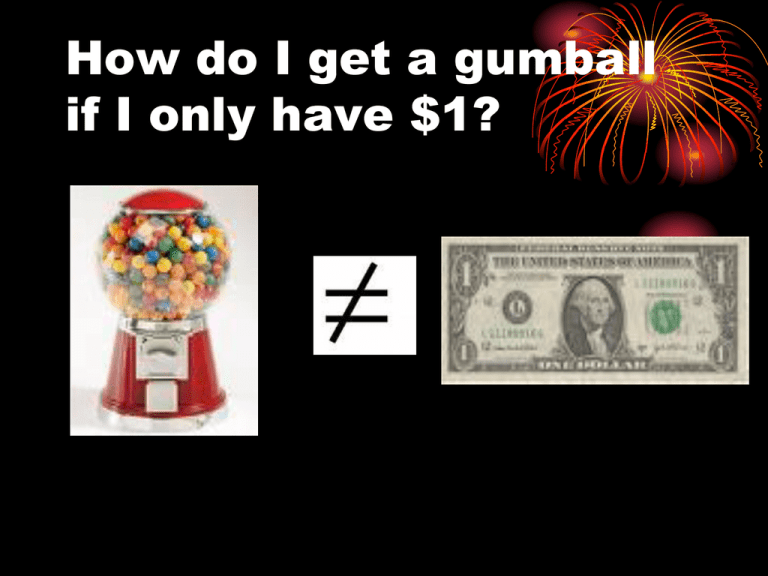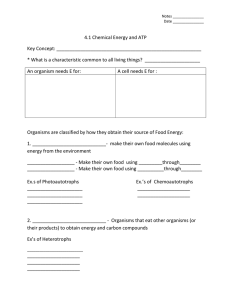ATP PPT
advertisement

How do I get a gumball if I only have $1? Change the form of the money! Food molecules are the $1000 dollar bills of energy storage! They function as fuel molecules, storing large quantities of energy in a stable form over long periods of time. BUT our cells can’t directly use that energy, so it needs to be converted into ‘coins’ • $1000 bill Coins Glucose is then stored in the bonds of the ATP molecule so the cell can use the chemical energy! Glucose The Main Energy Source for Cells Glucose contains WAY too much energy for the cell to use at one time! So… what has to happen? ATP One Powerful Molecule ATP provides chemical energy for cellular work! ATP = adenosine triphosphate 1. adenosine molecule 2. ribose (5-carbon sugar) 3. triphosphate tail ATP --> ADP + P + Energy ADP + P + Energy ---> ATP The ATP-ADP Cycle. Energy is needed for the formation of ATP and is released as the ATP is converted back to ADP and phosphate. ATP/ADP Cycle • Where is a phosphate added? • Where is a phosphate removed? ATP/ADP Cycle 1. Glucose enters a cell. 2. It is broken down releasing energy from its bonds 3. This energy is stored in a bond between a molecule of ADP and a phosphate (P) molecule resulting in an ATP molecule. 4. When this energy is needed, the last phosphate molecule (P) is broken off, releasing the stored energy from the bond. ADP results. • ATP ADP + energy (energy is released & used) • ADP + energy ATP (energy is stored) • SUMMARY: Our food is broken down into glucose. Our cells cannot use glucose as a source of ENERGY so the energy from glucose must be used to make ATP for cells. ATP is made of an adenosine molecule with 3 phosphates attached. ENERGY is stored in the bonds of phosphates. • When a phosphate is broken off the ATP molecule, ENERGY is *released* & the molecule is called ADP now. When energy is available again (from the food we eat) it will reattach a phosphate to ADP to make ATP again. The body will then be storing energy for when it is needed.


